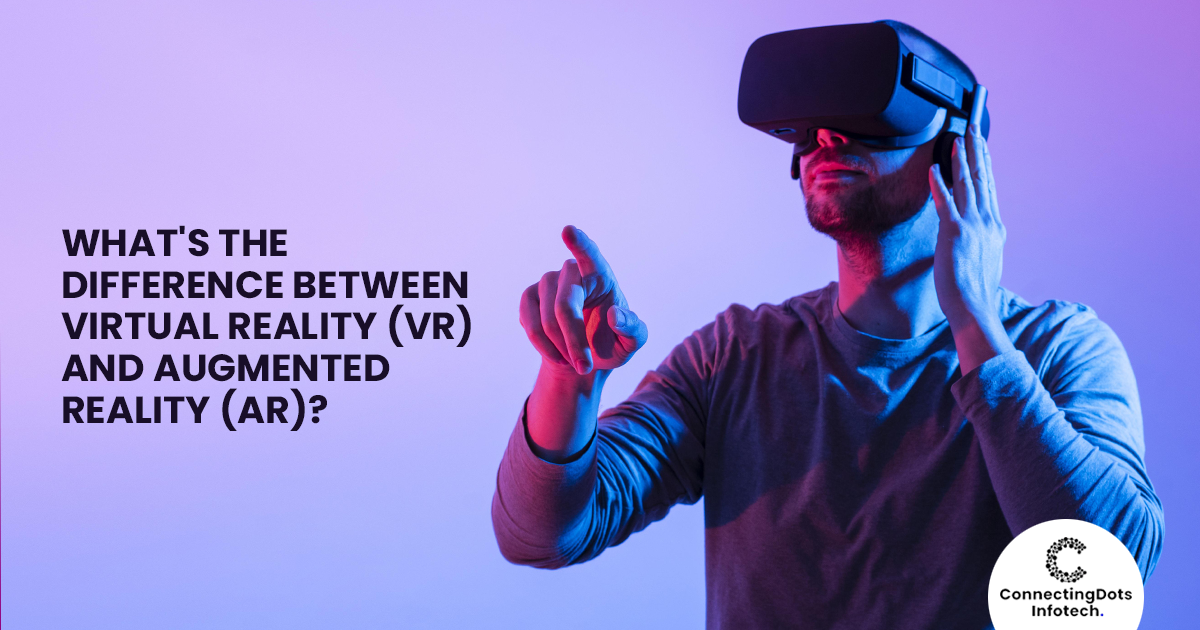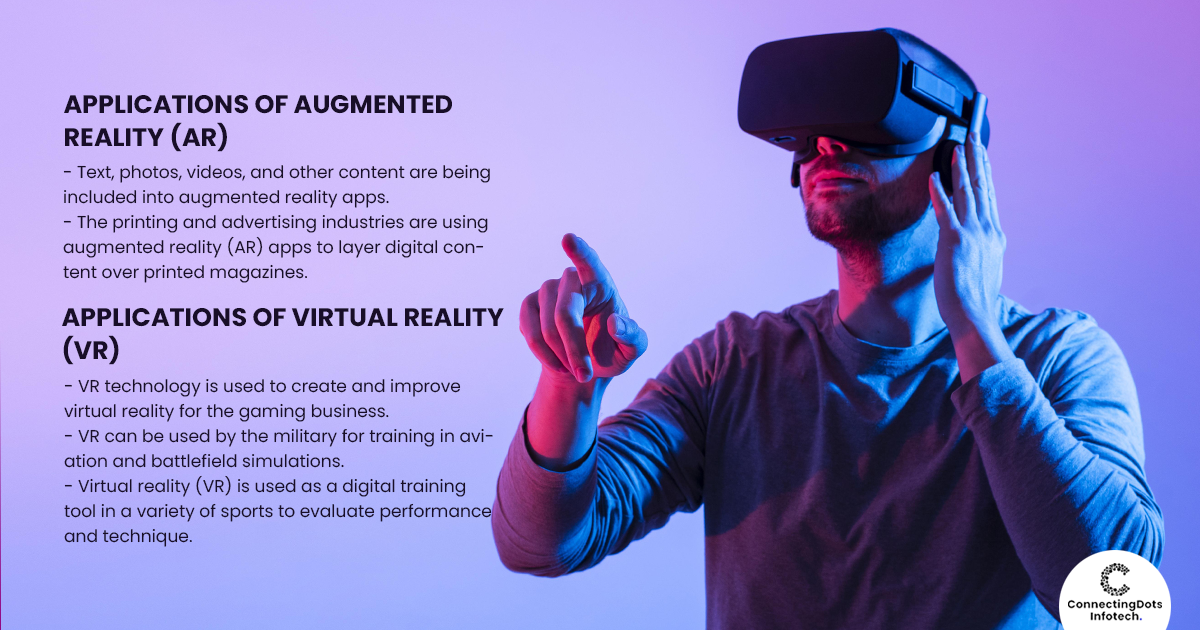What's The Difference Between Virtual Reality (VR) & Augmented Reality (AR)?

Augmented reality and Virtual reality both use simulations of actual situations to either improve or entirely replace them.
In augmented reality, a virtual environment is built to live alongside the real world to give consumers access to more information about the real world without having to look for it. For instance, industrial AR apps might immediately offer troubleshooting information when a smartphone is aimed at a piece of failing equipment.
A thorough environmental simulation known as virtual reality totally replaces the user's real surroundings with a computer-generated one. Because these virtual worlds are completely made of fiction, they are frequently designed to be larger than life.
What Is Augmented Reality?
Providing a real-time view of the world with digital data is the aim of augmented reality (AR), which intends to broaden the user's viewpoint of the physical world by integrating images, video, sound, and other virtual elements.
AR improves the environment by allowing virtual elements to interact with real objects to create desired meanings. By incorporating more data about the latter, AR enables the coexistence of lifelike virtual environments with the actual world. Then, how does augmented reality work?
An AR is typically generated by conventional devices, primarily smartphone cameras, without the requirement for specialised equipment. Since the systems determine the location and orientation of each object with respect to others, virtual 3D objects and environments are overlaid by AR systems on real-world objects in real time depending on their geometric relationships.
Today, mobile phone technologies like GPS, 3G, 4G, and remote sensing are frequently used in conjunction with augmented reality technology. Typically, the integrated image is displayed on devices like augmented reality goggles and mobile phones.
Examples of augmented reality (AR) systems include those used in photography and image editings, such as Snapchat filters, virtual changing rooms, home décor apps like IKEA mobile, virtual battlegrounds, and games like Nintendo's Pokémon Go. Additionally, AR is frequently employed in marketing, as well as in applications for healthcare and medicine.
What Is Virtual Reality?
Virtual reality (VR) uses 3D digital images and films that have been made in order to provide users with realistic visual experiences. Then, how does virtual reality work?
The goal of virtual reality is to completely immerse the user in a life-size 3D digital environment. In order to create 3D visuals and videos, many VR systems often use computer vision and cutting-edge visuals that add depth and recreate the size and distance between static two-dimensional (2D) images. All of this combines to create the illusion that you are genuinely there and a part of the particular digital scenario you are witnessing, simulating an environment rather than using it.
Users make use of computers as well as sensory aids like VR headsets and gloves to explore and manipulate 3D surroundings. Users are able to experience virtual information and interact with it intuitively, much as in the real world, thanks to the specific lenses in the VR headgear and controllers, which feature sensors.
Some of today's VR technology is more sophisticated than 3D. They have real-time tracking capabilities that make it possible to use VR for in-the-moment investigations and let users experience their virtual surroundings using all five senses.
Applications for VR in entertainment, including video games, education, classroom teaching, and business, like those typically used for virtual meetings, are a few examples.
Augmented Reality vs. Virtual Reality
Although both AR and VR are intended to give users a virtual, 3D experience, each technology is different and has its own set of applications. What is the primary distinction between AR and VR then?
A key difference between the two is that. In contrast, VR aims to replace the actual world completely, AR tries to add the virtual by superimposing digital information on top of the area that users are already viewing.
Additionally, as VR tends to fully immerse users, devices must disconnect users from the outside world by restricting their field of vision in order to display VR material. Therefore, using specialised gear like a VR headset or gloves to explore VR is recommended. In addition, it is relatively simple to use AR in both two-dimensional (2D) and three-dimensional (3D) situations, such as on a smartphone.
Applications of Augmented Reality (AR)
- Text, photos, videos, and other content are being included into augmented reality apps.
- The printing and advertising industries are using augmented reality (AR) apps to layer digital content over printed magazines.
- Translation apps that help you get text translated for you in a foreign language are made possible by AR technology.
- Real-time 3D games employing AR are being developed using the Unity 3D Engine tool.
Applications of Virtual Reality (VR)
- VR technology is used to create and improve virtual reality for the gaming business.
- VR can be used by the military for training in aviation and battlefield simulations.
- Virtual reality (VR) is used as a digital training tool in a variety of sports to evaluate performance and technique.
- It's also becoming more and more well-liked as a post-traumatic stress disorder treatment option.
- Using VR headsets like the HTC Vive, Google Cardboard, and Oculus Rift, users can inhabit both imagined and real-world environments, such as a squawking penguin colony or even the back of a dinosaur.
- With the help of VR technology, patients can experience their fears in a secure setting.
- VR is used by medical students for training and procedures.
- Students are assisted in developing skills that can later be applied in the real world by using virtual patients.
- With the help of VR technology, patients can experience their fears in a secure setting.

Conclusion
It would be erroneous to claim that virtual reality and augmented reality are designed to work separately. The majority of these technologies mesh together to create a more engaging experience when used in combination to transport the user to the fictitious world by introducing a new dimension of connection between the real and virtual worlds.
Stay tuned for more blogs!
